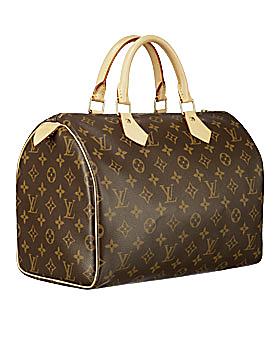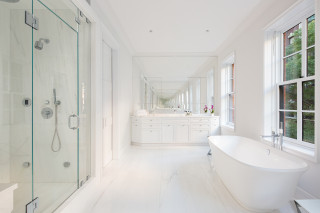 In this morning’s Financial Times, Aswath Damodaran, the NYU business school professorwho moonlights as the guy who teaches Goldman Sachs trainees about how to value companies, said he defined luxury as an industry that has figured out how to leave people feeling good about being suckered. He also said you can’t value luxury; it’s in the eye of beholder, but you can try to value a brand name, because a brand name is what gives you the power to charge a higher price for exactly the same product someone else has.
In this morning’s Financial Times, Aswath Damodaran, the NYU business school professorwho moonlights as the guy who teaches Goldman Sachs trainees about how to value companies, said he defined luxury as an industry that has figured out how to leave people feeling good about being suckered. He also said you can’t value luxury; it’s in the eye of beholder, but you can try to value a brand name, because a brand name is what gives you the power to charge a higher price for exactly the same product someone else has.
So do the brand names SUPERIOR INK, ONE JACKSON SQUARE, 100 ELEVENTH AVENUE, 200 ELEVENTH AVENUE, etc deliver the exact same product as other lesser brand buildings and charge much more?
New York residential real estate development has certainly abused the word ‘luxury’ over the past decade, and we think the majority of ‘luxury’ buildings consisted primarily of a plush sounding brand name, renderings of what was promised that skewered reality, often featuring couture-clad super-models, a very fancy lobby, a somewhat impressive facade, and then very ordinary apartments that do not qualify as anything special.
There have been exceptions: Some buildings have gone much further than the Louis Vuitton-style thinking of charging a fortune for a plastic bag made in China supported by excessive branding to justify an exorbitant price: A building like 100 Eleventh Avenue designed by Jean Nouvel, virtually re-invents space: while many new apartments do a very nice interior finish out, I would challenge anyone to create this finish in an existing space that does not have the remarkable windows, the ceiling heights and that unmistakable Jean Nouvel esthetic, whether you like it or not. These element could be re-created in cheaper space only to a point, and then they would fall short because of the structural aspects that are simply impossible to duplicate without ground-up construction.
Is Superior Ink really superior? The common areas and services certainly are: we were a bit disappointed with the actual apartments although the views and light are outstanding in many. 15 Central Park West delivers on many levels, but we felt the finish out and layouts of some of the apartments was rather dull: as expected, many buyers renovated. The Richard Meier Towers delivered a stellar modernist product, the like of which had never been seen anywhere in Manhattan before. Structurally there were some compromises, dictated mostly by the land. Pallazzo Chupi delivered a unique product, but it too had some elements that were questionable for a luxury product. The Bloomberg building delivered stellar, highrise apartments with an impressive building and continues to command premium pricing, as does the Time Warner Center, although we find many of those apartments a bit difficult because of the odd shape and proportioning of many of the rooms.
Would 200 Eleventh Avenue be the same if it did not have 24ft ceilings in the living room combined with protected park, river and skyline views, COMBINED with those superb windows AND mechanicals that were discrete and meaningfully concealed? Where in New York can you install a garage attached to your apartment? Impossible.
The inability to easily re-create a product is what we think true luxury is, and in real estate it has to encompass many elements:
1) A unique location with protected, meaningful views and exposures.
2) Significant architecture: architecture that cannot just be replicated by an interior finish out alone.
3) A composition within the building that protects its status. Inexpensive studios in a building mixed with super-luxury large units can deflate a building’s status.
4) Engineered mechanicals: discrete building systems that do not impact the quality of space (no hideous grills or intake panels!), quality windows, elevators large enough to fit the type of furniture and art associated with a luxury home.
5) Building amenities that are useful and meaningful to owners, delivered in a taste level that go well beyond utilitarian.
6) Building services, including a 24 hour doorman and quality super, are critical.
7) Strong proportioning: rooms designed to be lived in, with good ceiling height/volume, width and breadth. Rooms should be designed to accommodate furniture placement easily.
8) Technology: while most of this can be installed to meet the individual tastes of owners, the building should have technology built in to maximize efficiency of the systems as well as security for owners. Security is luxury.
So yes, we would conclude that there is such a thing as real luxury in Manhattan real estate, but it is in very short supply. And future projects will have to step up to deliver not just a partial list to ‘get by’, but the complete package, as the audience being catered to is now comparing what we deliver to other amazing products in other large cities around the world and New York has to work a lot harder to deliver much better.
